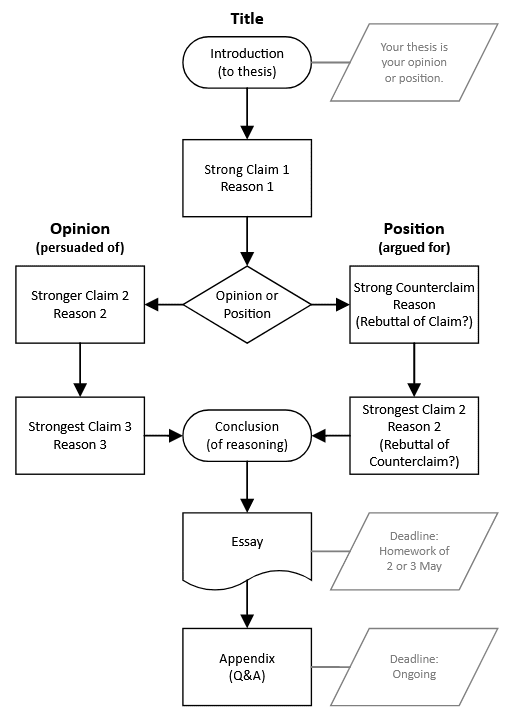Reply To: Year 9 (Grade 8) Interdisciplinary Signature Work Inquiry @ Blanchelande College
Home › Forums › Inquiry and resource design › Year 9 (Grade 8) Interdisciplinary Signature Work Inquiry @ Blanchelande College › Reply To: Year 9 (Grade 8) Interdisciplinary Signature Work Inquiry @ Blanchelande College
For various reasons, some of which relate to timetabling, it was not possible to start working directly on the speeches at the start of this term (3a below). However, this did allow me to re-think the function of the 1,500-word written Extended Elevator Pitch at the end of last term (2b below), which was meant to lay the foundation for students to build their speeches on. Consequently, I moved the re-thought 1,500-word written piece from Term 2b to Term 3a, which I will explain further, although it still serves to lay a foundation, and a more solid one at that, for the students to build their speeches on, as well as prepare themselves for the subsequent Q&A session.

I have been reflecting on the following thoughts about the theme of learning through writing from The Development of a Community of Inquirers in Action, Talk & Text: Learning & Teaching Through Inquiry (Wells, 2001, emphasis added)*:
Linda: I conjectured that perhaps if writing is used as a tool for what I call ‘rehearsal thinking,’ would our oral discourse be one in which more will participate as well as [be] more substantive? … So I decided to use writing as a tool for individual thinking before embarking on a class discussion. … The consequences were amazing. First the pool of ideas surprised me. … It also provided the less confident…a chance to ‘see their own thinking’ & therefore feel more confident in being able to ‘read out their thoughts’ rather than having to respond not only spontaneously but also at the turn-taking speed of oral discourse. Another is that writing slowed down one’s thinking, making it more deliberate & intentional allowing one the ‘space’ to be more thoughtful, making one’s thinking visible for review & changes. Very significantly, writing provided everyone a ‘same-time’ turn & therefore increased dramatically the pool of knowledge which linear turn-taking in oral discourse does not. (pp. 12-13)
Gordon: [The resulting plan] indicated a focus on writing, not as a finished product, but as a tool to be used in some subordinate activity. It also indicated an expectation that action and talk would be intimately connected to the written text. (p. 13)
This led me to re-think the Extended Elevator Pitch, which was really a very loosely structured script for the speech, as an essay, but an essay as a tool for building knowledge and understanding rather than as an ‘assessment’ of knowledge and understanding. Because the English speech and Q&A is integral to the Signature Work, the fact that the Signature Work is an inquiry-based exploration of a significant issue, problem or question made a persuasive/ opinion or argumentative/ position essay most appropriate.
This aligns well with the FOSIL priority skills for Construct and Express:

It took me some time to think my way through the essay writing process, which resulted in the following essay flowchart and graphic organiser, which I have just given to the students:


 This development has raised some important questions, which I will reflect on in due course.
This development has raised some important questions, which I will reflect on in due course.
*Wells, G. (2001). The Development of a Community of Inquiry. In G. Wells (Ed.), Action, Talk & Text: Learning and Teaching Through Inquiry (pp. 1-22). New York, NY: Teachers College Press.


